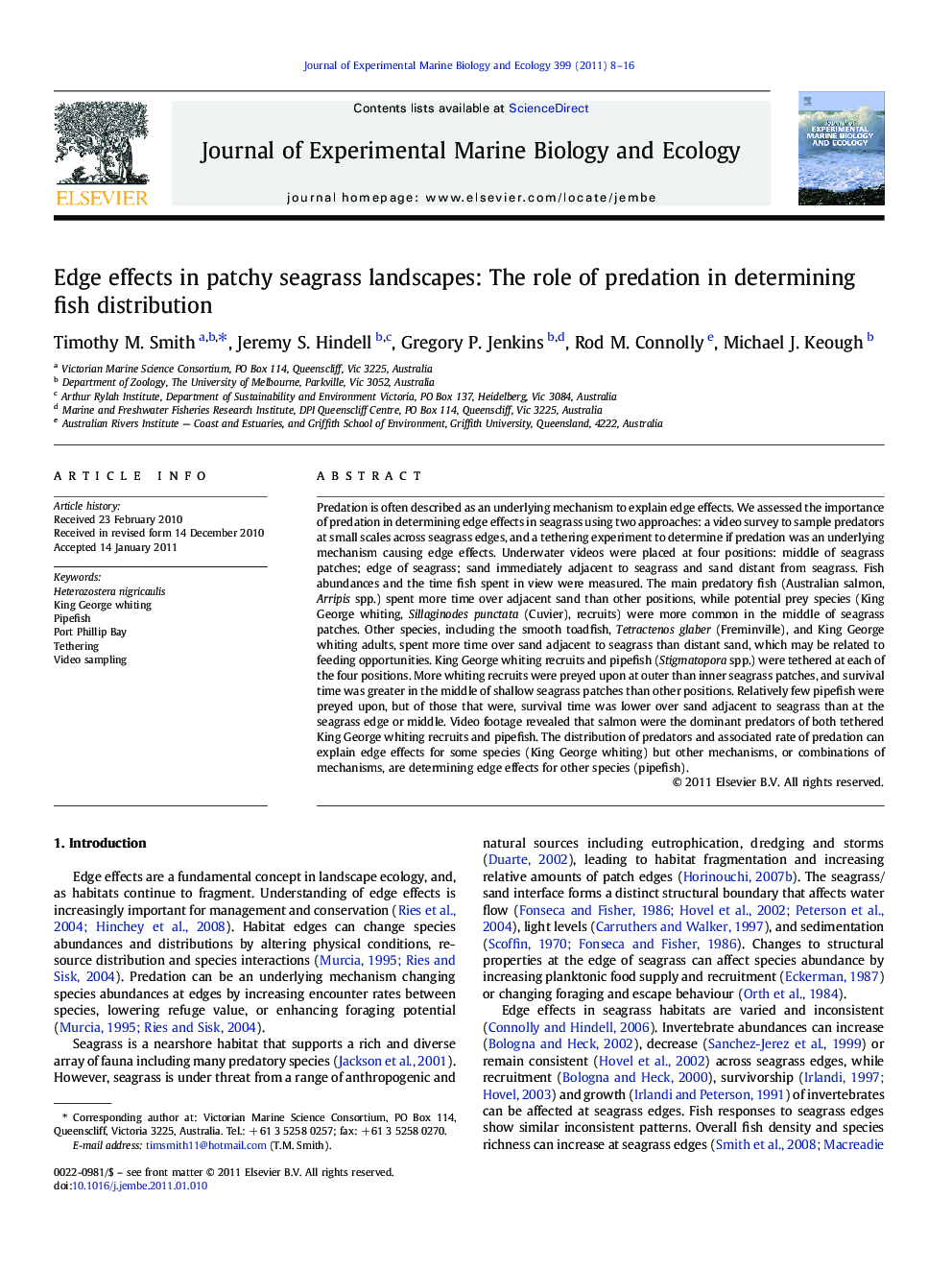| کد مقاله | کد نشریه | سال انتشار | مقاله انگلیسی | نسخه تمام متن |
|---|---|---|---|---|
| 4396436 | 1305824 | 2011 | 9 صفحه PDF | دانلود رایگان |

Predation is often described as an underlying mechanism to explain edge effects. We assessed the importance of predation in determining edge effects in seagrass using two approaches: a video survey to sample predators at small scales across seagrass edges, and a tethering experiment to determine if predation was an underlying mechanism causing edge effects. Underwater videos were placed at four positions: middle of seagrass patches; edge of seagrass; sand immediately adjacent to seagrass and sand distant from seagrass. Fish abundances and the time fish spent in view were measured. The main predatory fish (Australian salmon, Arripis spp.) spent more time over adjacent sand than other positions, while potential prey species (King George whiting, Sillaginodes punctata (Cuvier), recruits) were more common in the middle of seagrass patches. Other species, including the smooth toadfish, Tetractenos glaber (Freminville), and King George whiting adults, spent more time over sand adjacent to seagrass than distant sand, which may be related to feeding opportunities. King George whiting recruits and pipefish (Stigmatopora spp.) were tethered at each of the four positions. More whiting recruits were preyed upon at outer than inner seagrass patches, and survival time was greater in the middle of shallow seagrass patches than other positions. Relatively few pipefish were preyed upon, but of those that were, survival time was lower over sand adjacent to seagrass than at the seagrass edge or middle. Video footage revealed that salmon were the dominant predators of both tethered King George whiting recruits and pipefish. The distribution of predators and associated rate of predation can explain edge effects for some species (King George whiting) but other mechanisms, or combinations of mechanisms, are determining edge effects for other species (pipefish).
Research Highlights
► Predatory fish use sand edges adjacent to seagrass more than the seagrass interior.
► Prey species use the interior of seagrass patches more than seagrass edges.
► Predation can be lower at seagrass patch interior.
► Seagrass habitat edges can have higher rates of predation than patch interior.
► Few predators were observed at night.
Journal: Journal of Experimental Marine Biology and Ecology - Volume 399, Issue 1, 15 March 2011, Pages 8–16